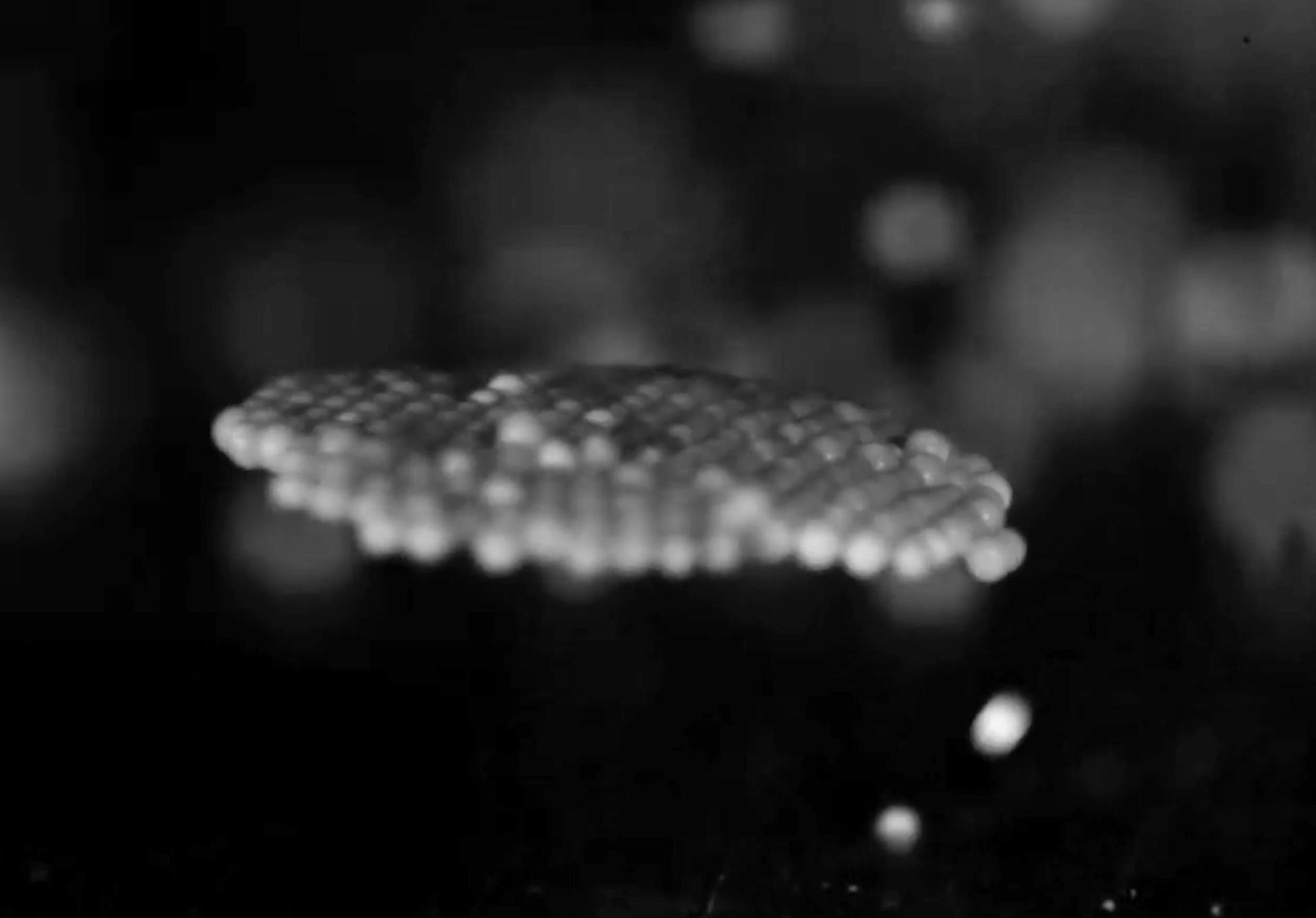Levitation might seem like a superpower out of science fiction. But unlike Doctor Strange, scientists don’t need spells to suspend and manipulate objects in midair. In a study published last week in Physical Review X, physicists at the University of Chicago and University of Bath described a way of harnessing the power of sound to make clumps of plastic particles float, spin, and break apart. Their findings could help us understand the physics of other rapidly-rotating entities—including black holes, atomic nuclei, and asteroids.
“Acoustic levitation is a really cool way to manipulate objects, because it’s literally using something very much like a loudspeaker,” says lead study author Melody Lim, an experimental soft matter physicist at UChicago.
Lim and her colleagues hoped to refine this sort of levitation so they could use it to move and manipulate objects without touching them. This has a myriad of potential applications: some physicists are even investigating acoustic levitation as a means of rearranging cells for the purpose of tissue engineering.
Lim and her team placed tiny round plastic particles—less than one millimeter in diameter each—inside a transparent box. To generate enough force to float and move them, they put a speaker inside the box that could generate standing waves—a type of a sound wave that is stationary. Lim likens it to the wave of a vibrating violin string.
The waves caused the beads to bounce and amass together in suspension, forming a single layer of little particles in a circle. In this levitated configuration, the sound waves generate a weak attraction, or cohesive force, between particles—“you can think of it just like a kind of sticky glue that holds everything together,” Lim says. As Lim and the team tweaked the frequency of the sound coming out of the speaker, the circular clump would wobble like a raft on a rocky ocean before beginning to spin.
Imagine riding on a swinging carousel as it picks up speed. The faster it turns, the more centrifugal force you experience—which makes the swing you’re dangling in start to fan outward instead of hanging straight down. This is essentially what happens to the floating disc of particles, Lim explains. But in this case, there are no strings tethering the floaters together.
[Related: This lamp can levitate thanks to electromagnets]
As the sound waves are manipulated further, “it reaches a point where it’s rotating as fast as it can possibly go,” Lim says. “Then that pushing force is stronger than the sticky glue that’s binding the particles together, and so the whole thing has to change shape.”
At these high speeds,

